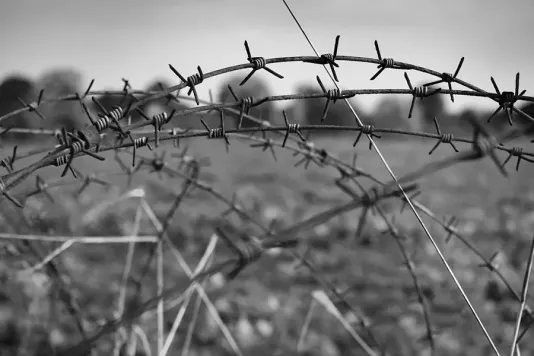
Rise of Barbed Wire
The First World War became the "golden age" of barbed wire - it was during this period that barbed wire was most widely used in military operations and fortification work. At the same time, the Bruno spiral was invented - a quickly installed cylindrical barbed wire barrier. The simplicity of design and high efficiency - the main differences between the Bruno spiral and other types of barbed wire fences - have allowed it to exist to this day in a slightly modified form.
Making a Bruno Spiral from Barbed Wire
The Bruno spiral was made quite simply - barbed wire was wound round to round on a wooden drum, the turns of which were then fastened together in a checkerboard pattern - the first with the second, the second with the third, etc. The result was a spiral barrier of barbed wire - Bruno's spiral https://caiman.ua/en/about/information/bruno-spiral. When stored, the Bruno spiral was an ordinary bay of barbed wire, but, unlike conventional barriers, the Bruno spiral could be installed on the ground quickly enough, simply by stretching and securing the barrier. In the installed form, the Bruno spiral was a cylindrical barbed wire barrier with diamond-shaped cells, which was very difficult to overcome.
Concertina Wire - Modern Bruno Spiral
The principle by which the Bruno spiral was made at the beginning of the 20th century has not changed to this day, only the barbed wire was replaced by the Egoza razor wire. The main differences in the production of modern barriers are the automation of all technological processes and the use of modern Egoza razor wire as a raw material. The modern Bruno spiral is made of Egoza barbed wire and is called the spiral security barrier or Concertina wire. The Concertina wire barrier inherited the ease of installation and shape from the Bruno spiral made of ordinary barbed wire, as well as the strength, reliability and spring properties from Egoza razor wire. Due to this, the concertina wire security barrier is widely used in modern perimeter protection.